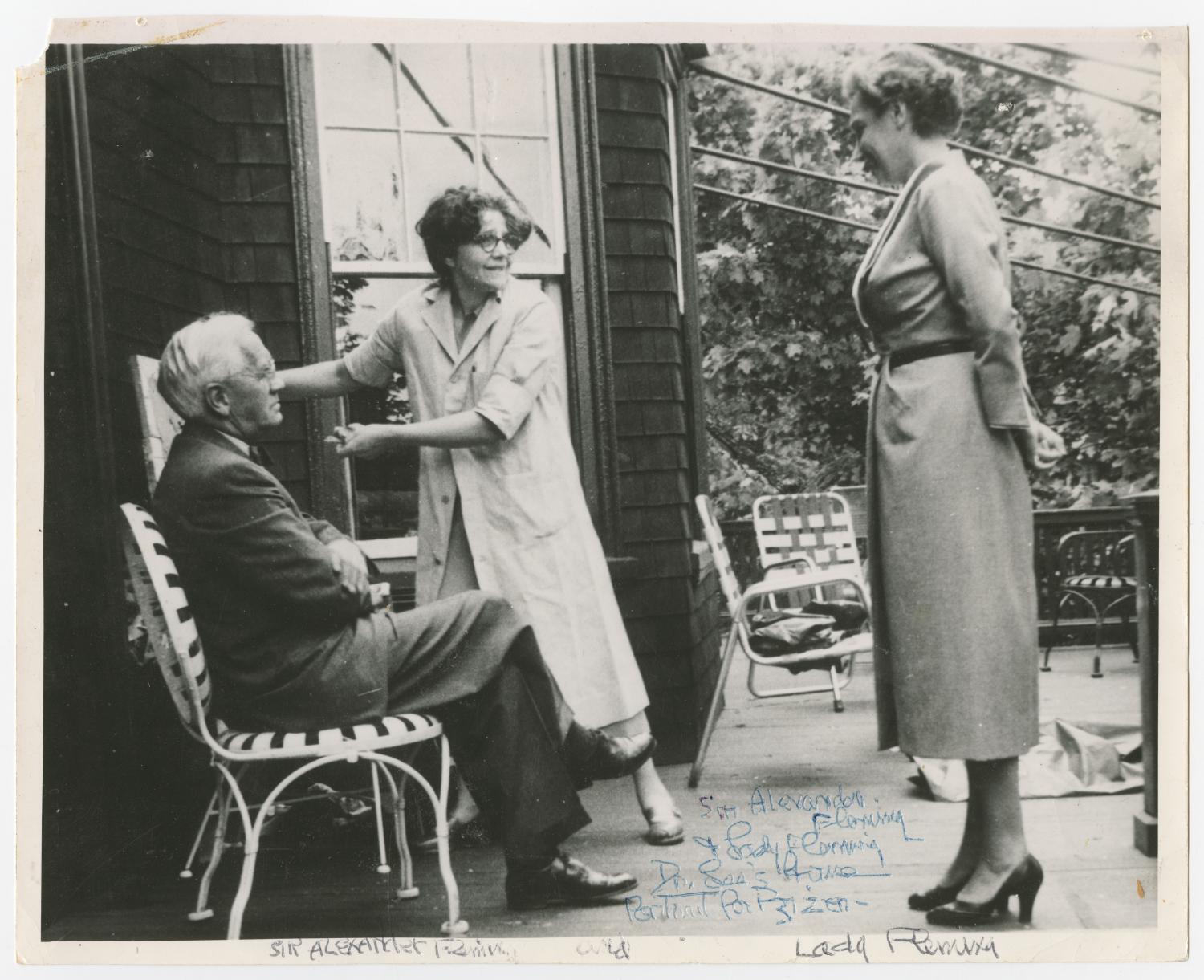Moody Medical Library
Academic Resources | Blocker History of Medicine Collections

Known for her larger than life sculptures, Doris Appel (1904-1995) was one of the most influential artists of medical history in the 20th century.
A student of the School of the Boston Museum of Fine Arts and the School of Art of Boston University, Appel confined her work to the interpretation of medical history. She was a member of the Medical History Society and made many deep and lasting friendships with medical historians. Albert Einstein, Max Neuberger, George Sarton, and Henry Sigerist each encouraged her throughout her career. Medical historian Arturo Castiglione characterized her work as “an important art contribution, unique in its kind in the history of medicine.”
Appel’s sculptures appear in libraries, universities, and medical institutions across the country. Her most monumental installation is the Hall of Medical History, which she created in two nearly identical versions. One is installed at the Boston University School of Medicine and the other is in the foyer of the Ashbel Smith Building (“Old Red”) at UTMB. This exhibit features twelve eight-foot tall sculptures of medical pioneers including Hippocrates, William Harvey, Louis Pasteur, and Marie Curie.
For the creation of each figure, Appel studied and prepared for months. She worked with experts on each historical figure. Of particular interest is that she made very few sketches, no preliminary maquette (small figure); the vision was firmly in her head. After she and her husband, dermatologist Dr. Bernard Appel (1897-1986), had constructed the lead armature and heavy wire fencing to the back of a ten foot high wood panel, she would prepare the big pots of moist Italian clay. Next she would close her studio door and create the statue at high speed, finishing within three or four days. A plaster mold was made by throwing wet plaster onto the clay figure. The figure was laid face down and all the clay of the original statue dug out of the mold. The mold was soaped to oil the inside of the mold and fresh new tinted plaster was carefully thrown into the mold to retain all of the details. The inside plaster hardened; the statue was up-righted in place and the original mold chipped off.
The Doris Appel Papers contain correspondence, papers, and photographs regarding her medical history sculptures. Included are her handwritten lecture notes from an opening of the Hall of Medical History as well as photographs of Appel creating a bust with Sir Alexander Fleming sitting as the model.
The Truman G. Blocker, Jr. History of Medicine Collections is the fortunate holder of several pieces of Doris Appel’s work, all of which are on permanent display.